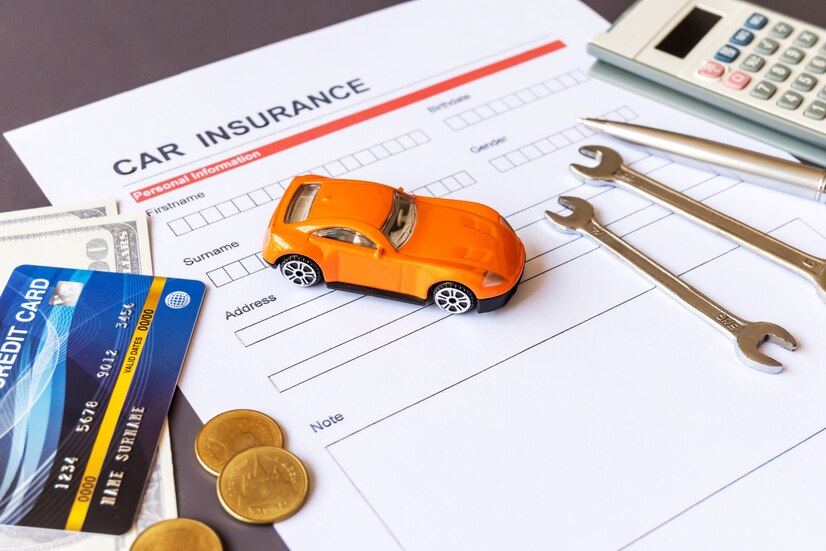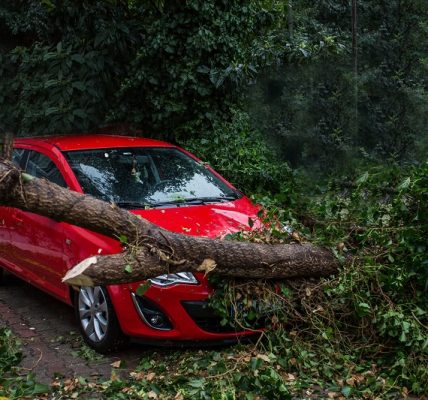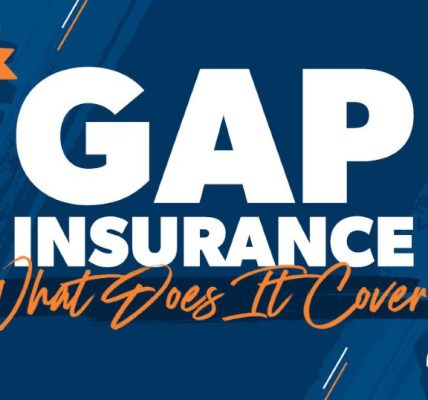When it comes to owning a vehicle, having the right auto insurance coverage is not just a legal requirement in many places; it’s a crucial financial safeguard. While no one likes to think about accidents or unexpected events, being prepared with the right coverage can save you from significant financial hardships.
Auto insurance can be confusing with its myriad of terms and options, especially when it comes to classic and vintage automobiles. What coverage do you need? What are the different types available? How do you strike the balance between comprehensive coverage and budget constraints? This guide aims to answer what auto insurance coverage should I have.
What Auto Insurance Coverage Should I Have?

Liability Coverage
Liability coverage is the foundation of most auto insurance policies. It provides financial protection if you’re at fault in an accident, covering bodily injuries and property damage. There are three main components to liability coverage:
Bodily Injury Liability
This aspect of liability coverage pays for medical expenses, lost wages, and legal fees for other people injured in an accident you’re responsible for. It ensures that those affected receive the necessary medical care and compensation.
Property Damage Liability
Property damage liability covers the cost of repairing or replacing other people’s property, such as their vehicles or structures, that you damage in an accident.
Explaining Coverage Limits
Every liability policy has coverage limits. For instance, if your coverage limit for bodily injury liability is $50,000 and the total medical expenses of those injured in the accident exceed this amount, you could be personally responsible for the difference.
Collision Coverage
What Collision Coverage Includes
Collision coverage covers your vehicle’s repair or replacement costs if you collide with another vehicle or object, regardless of who’s at fault. It ensures you won’t have to bear the full financial burden of repairing or replacing your damaged car.
Determining Deductibles
When you have collision coverage, you must pay a deductible before your insurance kicks in. The deductible is the amount you pay out of pocket before your insurance covers the rest.
When Collision Coverage Is Necessary
Collision coverage is particularly important for newer or more valuable vehicles. If you have a loan or lease on your car, your lender may require you to have collision coverage to protect their investment.
Comprehensive Coverage
Comprehensive Coverage Explained
The coverage protects against damage to your vehicle that isn’t caused by collisions. This includes damage from natural disasters, theft, vandalism, and more.
Coverage for Non-Collision Incidents
Comprehensive coverage encompasses many scenarios, such as hail damage, falling objects, fire, and even hitting an animal on the road.
Deductibles and Comprehensive Coverage
As with collision coverage, you’ll need to choose a deductible for comprehensive coverage. Your deductible affects your premium – a higher deductible generally leads to a lower premium.
Uninsured and Underinsured Motorist Coverage
What Is Uninsured Motorist Coverage?
Uninsured motorist coverage protects you if you’re in an accident caused by a driver who doesn’t have insurance. It covers your medical expenses, lost wages, and other damages.
Understanding Underinsured Motorist Coverage
Underinsured motorist coverage comes into play when the at-fault driver’s insurance limits are insufficient to cover your expenses. This coverage helps bridge the gap between their coverage and your actual costs.
Benefits of Uninsured/Underinsured Motorist Coverage
Having uninsured and underinsured motorist coverage ensures you’re not left financially vulnerable if you’re involved in an accident with someone who lacks proper insurance coverage.
Personal Injury Protection (PIP) and Medical Payments Coverage
Explaining Personal Injury Protection (PIP)
Personal Injury Protection (PIP) is a type of coverage that pays for your medical expenses and those of your passengers, regardless of who’s at fault in the accident. It can also cover other expenses like lost wages and even funeral costs.
Medical Payments Coverage: How It Works
Medical payment coverage, often called MedPay, is similar to PIP but has a narrower focus. It covers medical expenses for you and your passengers but doesn’t typically extend to lost wages or other costs.
Differences Between PIP and Medical Payments Coverage
The main distinction between PIP and medical payment coverage lies in the range of expenses they cover. PIP is more comprehensive, while MedPay focuses primarily on medical bills.
| Feature | PIP | MedPay |
|---|---|---|
| Coverage | Medical expenses, lost wages, and essential services | Medical expenses only |
| Availability | Required in some states, optional in others | Optional |
| Premiums | Typically higher than MedPay | Typically lower than PIP |
| Subrogation | No subrogation | May require subrogation |
| Claims filing | File with your own insurance company | File with the at-fault driver’s insurance company |
Gap Insurance
What Is Gap Insurance?
Gap insurance, or Guaranteed Asset Protection insurance, covers the difference between what you owe on your auto loan or lease and the actual cash value of your vehicle in case it’s totaled or stolen.
How Gap Insurance Protects You
Standard insurance will only reimburse you for the current market value if your car is totaled in an accident. The insurance ensures you’re not left with a significant financial gap between what you owe and what you receive.
Gap Insurance vs. Loan/Lease Payoff
Gap insurance is especially important for new cars that depreciate quickly. It differs from loan/lease payoff coverage, which only covers the remaining loan balance, excluding potential negative equity.
Rental Car Reimbursement Coverage
Understanding Rental Car Reimbursement
Rental car reimbursement coverage helps pay for a rental vehicle while yours is being repaired due to an accident or covered event.
When Is Rental Car Reimbursement Useful?
If your car is in the shop after an accident, rental car reimbursement coverage ensures you won’t be left without transportation while waiting for repairs.
Limitations and Considerations
Rental car reimbursement coverage typically has daily limits and maximum durations. It’s important to understand these limits before relying on this coverage.
Towing and Labor Coverage

Explaining Towing and Labor Coverage
Towing and labor coverage covers the cost of towing your vehicle to a repair shop and sometimes includes additional services like jump-starts or flat tire changes.
Benefits of Towing and Labor Coverage
This coverage can provide peace of mind knowing that if your car breaks down or you’re stranded on the road, assistance is just a phone call away.
Coverage Limits and Scenarios
Towing and labor coverage often have limits on the distance your vehicle will be towed and the amount covered for services like locksmith assistance.
Deductibles and Premiums
How Deductibles Affect Your Coverage
Choosing the right deductible balances your out-of-pocket costs in the event of a claim and your monthly premiums.
Balancing Deductibles and Premiums
Higher deductibles lead to lower premiums, but you should choose a deductible you can comfortably afford to pay in case of an accident.
Tips for Choosing the Right Deductibles
Consider your financial situation, driving habits, and the value of your vehicle when selecting your deductible amounts.
Factors Affecting Auto Insurance Coverage Needs
Vehicle Value and Age
Newer, more valuable cars generally require more coverage, while older vehicles may need less.
Personal Financial Situation
Your finances play a role in determining how much coverage you can afford and need.
Driving Habits and Usage
How often you drive and your conditions can impact the likelihood of accidents and your coverage needs.
State-Specific Requirements
Minimum Auto Insurance Requirements by State
Each state has its minimum auto insurance requirements that drivers must meet.
Additional Coverage Recommended by State
While meeting the minimum requirements is essential, some states have additional recommendations based on local factors like weather and accident rates.
Assessing Your Coverage Needs
Evaluating Your Personal Risk Tolerance
Consider how much financial risk you’re comfortable taking on in case of an accident.
Analyzing Potential Scenarios
Think about different accident scenarios and how your coverage would come into play in each.
Seeking Professional Advice
If you’re unsure about the right coverage, it’s a good idea to consult with an insurance professional.
Coverage for Special Situations
Coverage for Teenage Drivers
Adding a teenage driver to your policy can affect your rates, but there are ways to mitigate the impact.
Auto Insurance for Seniors
Seniors may qualify for special discounts and programs that cater to their unique driving needs.
Auto Insurance for High-Risk Drivers
High-risk drivers, such as those with multiple accidents or traffic violations, may have limited coverage options and higher premiums.
Understanding Exclusions
Common Exclusions in Auto Insurance
Auto insurance policies have exclusions – situations or events that aren’t covered.
Reading the Fine Print
It’s crucial to read and understand the fine print of your policy to know what is and isn’t covered.
Exploring Policy Exceptions
Some exclusions may have exceptions, so it’s important to know the details of your policy.
Discounts and Savings
Available Auto Insurance Discounts
Many insurers offer discounts for things like safe driving records, vehicle safety features, and even good grades for student drivers.
Bundling Policies for Savings
You can often save by bundling your auto insurance with other home or renters insurance policies.
Keeping Your Premiums Affordable
Maintaining a clean driving record and being mindful of the factors influencing your premium can help keep your costs down.
Filing Claims and Dealing with Insurers
Step-by-Step Guide to Filing a Claim
Knowing what steps to take after an accident can streamline the claims process.
Tips for a Smooth Claims Process
Communicate clearly with your insurance company, provide all necessary documentation, and follow their instructions.
Dealing with Insurance Adjusters
Be prepared for discussions with insurance adjusters and provide accurate information about the accident.
Reviewing and Updating Your Coverage
Why Regular Review Is Essential
Your coverage needs can change over time, so it’s important to review your policy periodically.
Life Changes That Impact Coverage
Major life events like buying a new car, moving, or getting married can affect your coverage requirements.
Making Adjustments as Needed
Don’t hesitate to update your coverage to align with your changing circumstances.
Common Auto Insurance Myths
Myth: Red Cars Have Higher Premiums
Contrary to popular belief, the color of your car doesn’t directly impact your insurance premium.
Myth: Full Coverage Means Everything Is Covered
“Full coverage” doesn’t mean your policy covers every possible scenario; it refers to a combination of liability, collision, and comprehensive coverage.
Dispelling Other Misconceptions
Educate yourself about other common auto insurance myths to make informed decisions.
Case Studies: Real-Life Insurance Scenarios
Case 1: Accidents Involving Uninsured Drivers
Understanding how uninsured motorist coverage can come to your aid in accidents involving drivers without insurance.
Case 2: Totaling a Leased Vehicle
Learn how gap insurance can save you from financial strain when your leased vehicle is totaled.
Case 3: Comprehensive Coverage for Natural Disasters
Comprehensive coverage can be a lifesaver when your car is damaged by a natural disaster.
Auto Insurance and Legal Requirements
The Legal Aspect of Auto Insurance
Auto insurance is legally required in many places to ensure financial responsibility.
Penalties for Driving Without Insurance
Driving without insurance can lead to fines, license suspension, and other legal consequences.
Importance of Compliance
Complying with auto insurance laws is a legal requirement and a responsible choice that protects you and others on the road.
Staying Informed About Changes in Coverage
Adapting to New Circumstances
As your life changes, your coverage needs may evolve as well. Stay informed and adjust your policy accordingly.
Monitoring Policy Updates
Keep an eye out for updates from your insurance provider and be proactive about understanding any changes to your coverage.
Seeking Regular Policy Reviews
Regularly reviewing your policy with your insurance agent ensures you’re always adequately protected.
Auto Insurance for Business Use
Coverage Considerations for Business Vehicles
Using your vehicle for business purposes may require specialized coverage to protect your business assets.
Commercial Auto Insurance Explained
Learn about commercial auto insurance and how it differs from personal auto insurance.
Mixing Personal and Business Coverage
If you use your vehicle for personal and business purposes, explore the options for effectively combining coverage.
Understanding Subrogation
What Is Subrogation?
Subrogation is when your insurance company seeks reimbursement from the at-fault party’s insurance after paying your claim.
How Subrogation Affects Your Claims
Subrogation can impact your claim if your insurer successfully recovers funds from the at-fault driver’s insurance.
Subrogation and Fault Determination
Understanding how fault is determined is crucial, as subrogation relies on establishing who’s responsible for the accident.
Navigating the Claims Process
Steps to Take After an Accident
Knowing what to do immediately after an accident can help streamline the claims process.
Gathering Evidence for Claims
Collecting evidence, such as photographs and witness statements, can support your claim’s validity.
Dealing with Repair Shops
Choosing a reputable repair shop and communicating effectively with them can facilitate a smooth claims process.
Exploring Future Trends in Auto Insurance
Impact of Autonomous Vehicles
As autonomous vehicles become more prevalent, the landscape of auto insurance could undergo significant changes.
Usage-Based Insurance Models
Usage-based insurance, where premiums are determined by driving habits, offers potential savings for careful drivers.
Technological Advancements in Claims Processing
Technological advancements, such as AI-driven claims processing, can expedite claims and enhance accuracy.
Conclusion
Choosing what auto insurance coverage should I have is a critical decision that requires careful consideration of your needs, budget, and potential risks. By understanding the various types of coverage, considering your situation, and seeking professional advice, you can make well-informed choices. Auto insurance is not just a legal requirement; it’s a way to protect yourself, your passengers, and your assets from unexpected accidents and events.
Frequently Asked Questions
- Q: Is it necessary to have comprehensive coverage?
- A: Comprehensive coverage is not mandatory but can provide added protection against a range of non-collision incidents.
- Q: How do I know what coverage limits to choose?
- A: Consider your financial situation and the potential costs of accidents when deciding on coverage limits.
- Q: Are auto insurance rates the same across all states?
- A: No, auto insurance rates vary by state due to factors like local laws, accident rates, and population density.
- Q: Can I add coverage for rental car reimbursement after an accident?
- A: Rental car reimbursement coverage is typically included in your policy before an accident occurs.
- Q: How often should I review and update my auto insurance coverage?
- A: It’s a good idea to review your coverage annually and whenever significant life changes occur.





